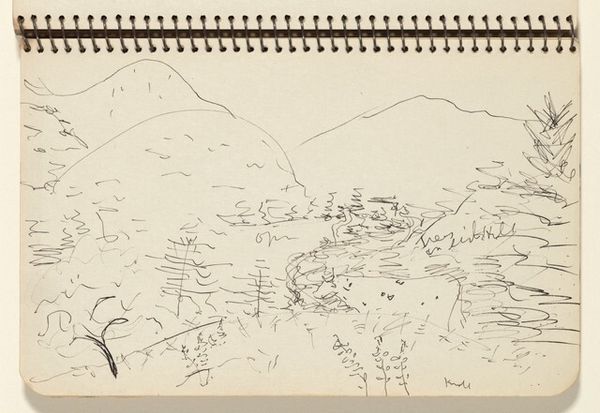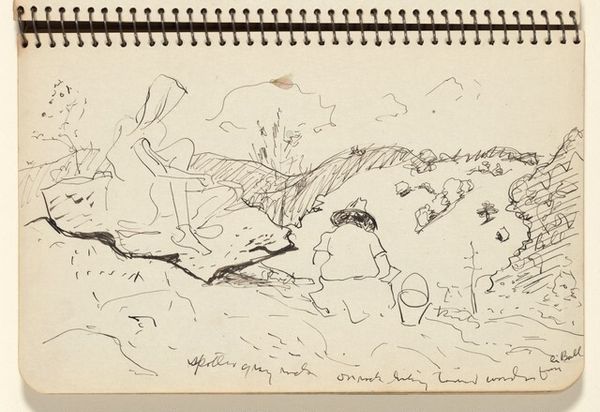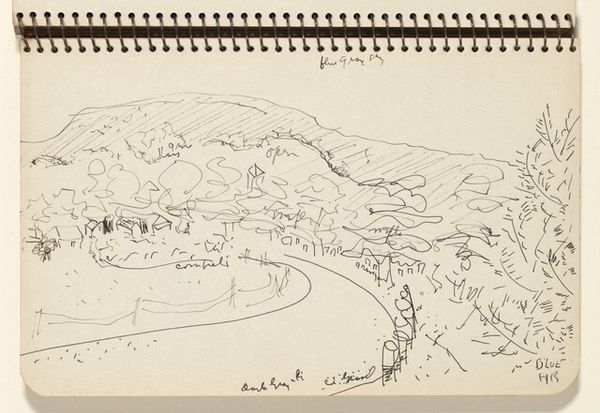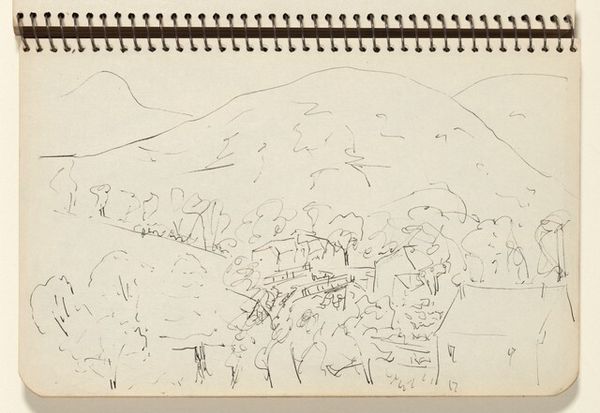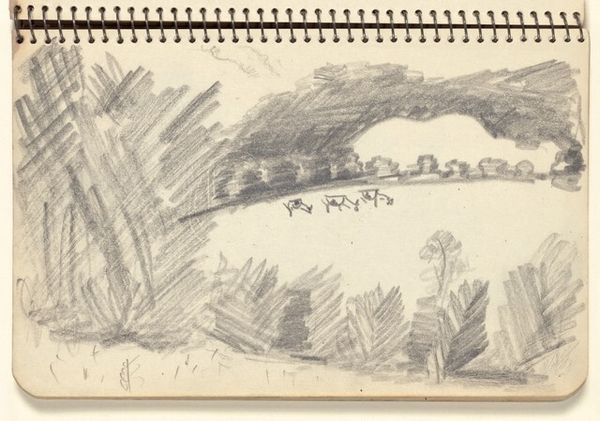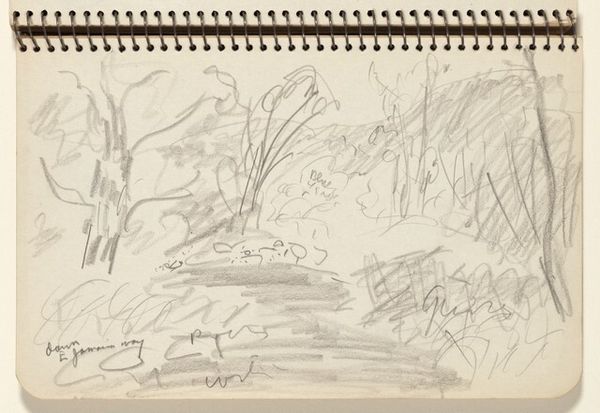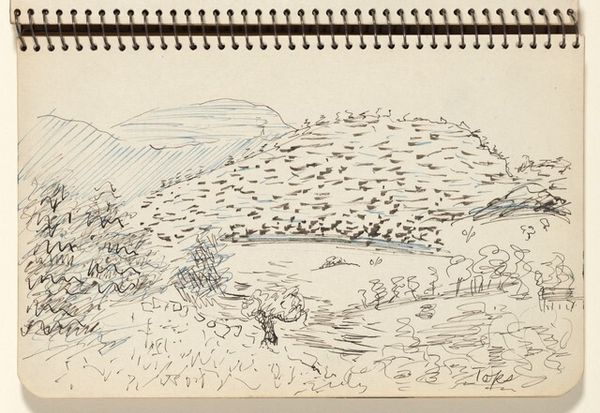
drawing, paper, ink, pencil
#
drawing
#
landscape
#
paper
#
ink
#
pencil
Dimensions: overall: 12.8 x 20 cm (5 1/16 x 7 7/8 in.)
Copyright: National Gallery of Art: CC0 1.0
Curator: We're looking at "Vermont Landscape," a 1943 drawing by Milton Avery. He worked in ink and pencil on paper for this sketch. Editor: There’s something raw about this preliminary sketch. It’s so free. It almost feels weightless, despite being a landscape. Curator: Yes, consider how the linearity structures the whole composition. Avery uses almost scribbled, short pen strokes in the foliage, contrasting them with the longer, almost confident, single lines that suggest the topography. There's a clear engagement with structuralist principles here; the marks signify more than they literally represent. Editor: But what does it signify? To me, it captures the essence of the Vermont landscape and hints at its quiet dignity. Notice how the steeple on the building connects the earthly realm to something beyond. Think about New England village greens, their historic importance as places of refuge. Curator: Interesting that you hone in on that. I would propose that the positioning of the steeple, balanced carefully within the composition and its internal, almost calligraphic rhythm, is far more compelling as an indication of aesthetic intentionality, than as any simple indicator of geographic setting. Editor: Can't it be both? The church speaks of community and history. It’s not simply the FORM of a steeple, but its function, its role as a steadfast image within that historical moment. Avery gives it primacy with placement. Curator: Still, let's focus on his masterful rendering of space and form, shall we? Avery understood how to distill a landscape to its core components—light, line, shape—leaving the semiotic baggage aside. The drawing invites contemplation of these core visual elements. Editor: And through those very intentional choices he guides us towards deeper associations, the continuity of generations rooted to the land. Perhaps Avery believed line and light can represent history itself. Curator: Well, whether line is a guide to enlightenment or aesthetic pleasure is certainly up for debate. Thanks for these…colorful insights. Editor: The dialogue has been as rewarding for me, and as open as the lands depicted.
Comments
No comments
Be the first to comment and join the conversation on the ultimate creative platform.
